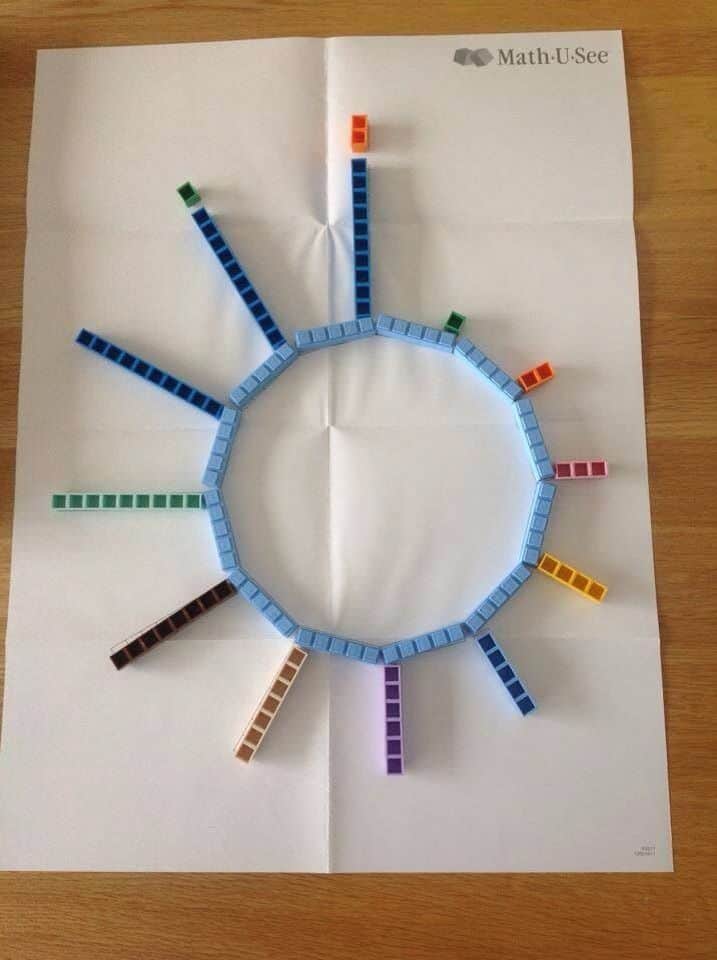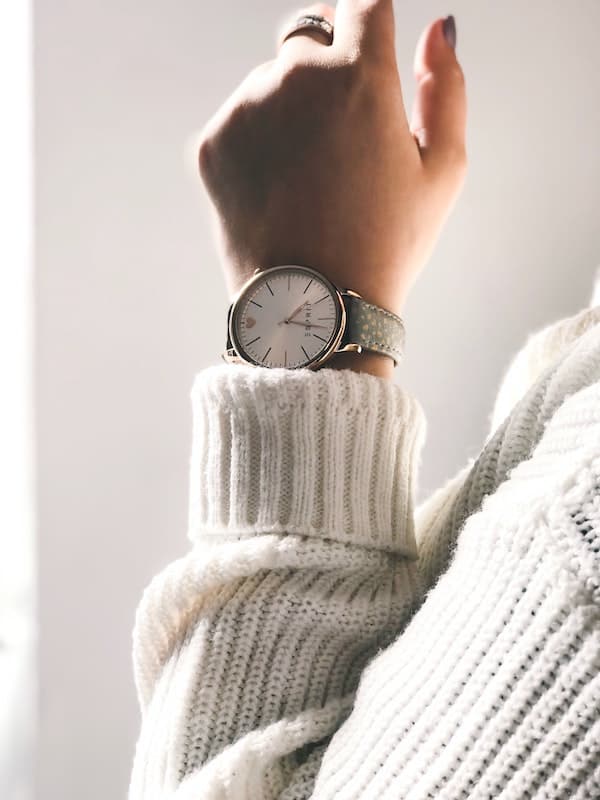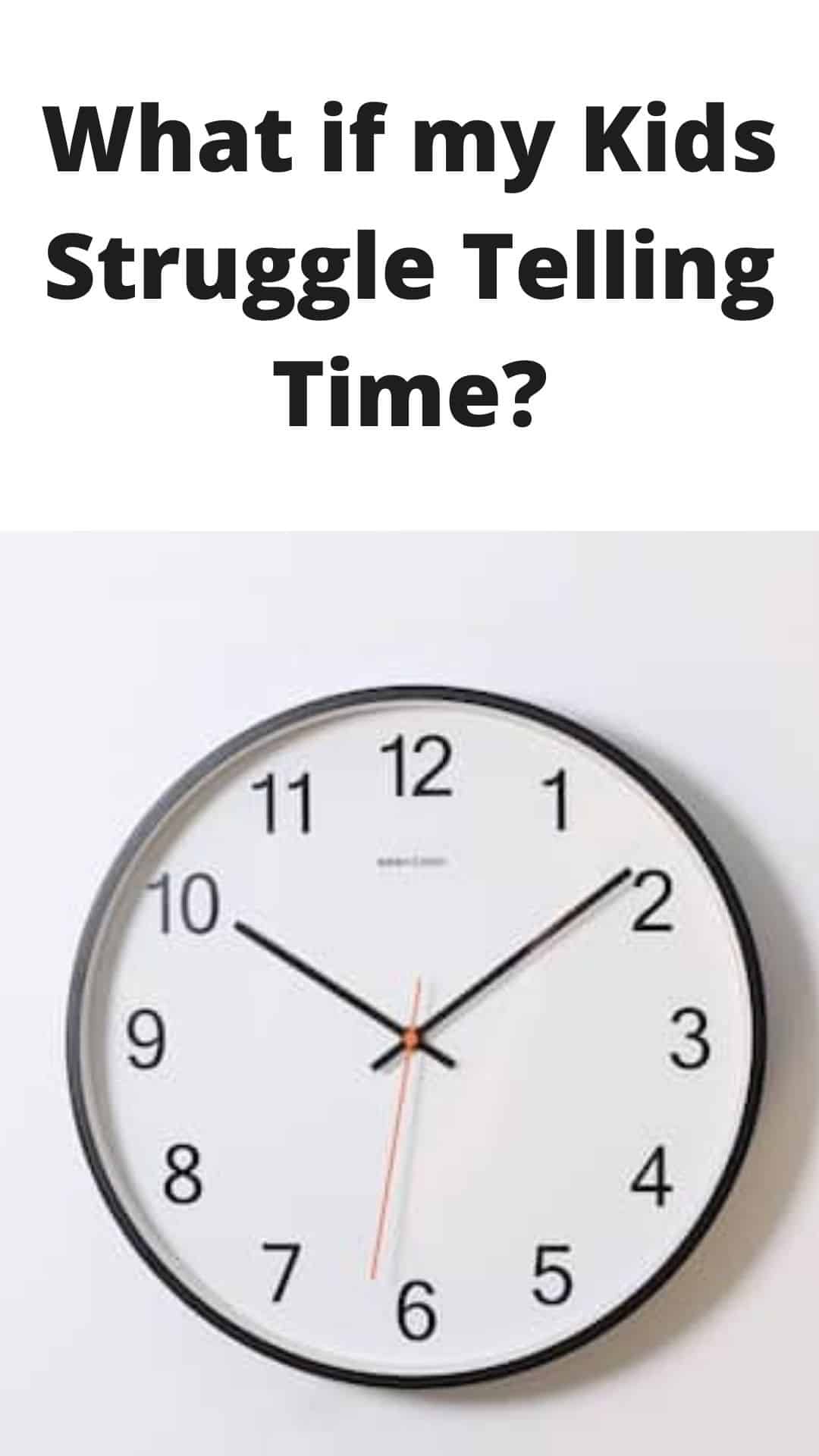
What if my kids struggle with telling time?
Telling time is an important life-skill to have and is something all parents should teach their kids. Telling time allows you to look at an analog clock and know what time of the day you are at, and when you need to be at certain appointments.
Even though we have a technologically-dominant culture, we still use analog clocks. Doctors offices, dentists, classrooms, teachers and most houses have an analog clock somewhere on the wall.
In this article, we will be discussing the importance of telling time, why it's an important life skill, and how you can teach telling time to your kids in an easy and effective way.
Why is it important to learn telling time?

Learning how to tell the time is an important skill. It means your child not only practises their time-telling skills, but they also have a chance to further practice their multiplication of fives and tens, place value, addition to sixty, and many other foundational concepts.
Telling time is sometimes deemed "too hard" and may mean students are left behind to rely on digital time only (as available on phones, digital watches and computers). Often, students don't understand the minutes and hours and are unable to comprehend analog clocks altogether.
Teaching time consists of a few important factors.
Firstly, your child must understand what numbers are, and how to use them. They must be comfortable enough to know the value of each number, if it is laid out in a row from biggest to smallest (like most number figures are e.g 547 meaning there are 5 hundreds, 4 tens and 7 units) when the number is by itself (60 meaning there are 6 tens) and when numbers are laid out in a pattern such as a circle (as shown in the clock face).
Then, you must have a way to teach telling time in a simple, coherent way. Many kids often get overwhelmed with this concept because there are too many things going on at once. How do you explain that there are 5 minutes between each hour on the clock (when talking about minutes) but also 1 hour between each hour (when talking about hours) at the same time?
And how do you explain that when the hour hand is close to the nearest hour, the actual time is the hour beforehand? For example, when the minute hand of the clock is closest to 3pm, the time may actually be 2.45pm.
How do you explain the difference between the daytime hours and the night-time hours? How can you show your kids that one full rotation of the clock face is 12 hours, and then it repeats again for the night-time, but the whole 2 rotations of the clock face actually only equal 1 day?
It's all too confusing and overwhelming!
How do you teach your kids telling time?
Telling time can be taught in an easy and effective way, when you introduce the key elements progressively, and make sure that your student has ever piece needed for understanding - counting, then adding, then multiplying ... and teaching minutes and hours separately. This method of telling the time is so fundamental that we teach it in our foundational levels of the Math-U-See program.
So where to start?
Start with understanding Place Value first. When your kids finally get the concept of Place Value, they will succeed in maths all the way to highschool. So many kids across Australia in Grade 8 and Grade 9 are having to go back to our Year 1 level maths to learn Place Value. It's much easier if you tackle this concept first and make sure your kids have understood it, before moving on.
What does Place Value have to do with telling time?
We caught up with Esther White, Director of Maths Australia to ask this important question. One of our customers in the #AskEsther section wanted to know what Place Value has to do with telling time, and why students particularly struggle with Place Value when learning this concept. Esther explains how to break down the concept of telling time and all it's pieces into simple, effective steps.
Here's what Esther said:
Use specific tools to teach telling time
It's much easier if you use specific tools to teach your kids how to tell the time. Although you can try and explain the time concept in an abstract way, it fails miserably. Most kids I know can't tell time accurately to save their lives, and it's a basic skill that's sorely lacking in our current society - even though analog clocks are everywhere!
The best way to teach time is in two segments - first, teaching the minutes and secondly, teaching the hours. This makes the concept much more understandable for kids. This is the most effective strategy to tackle this subject, making it easier for you as the parent to teach, and easier for your child to grasp.
Teaching the Minutes
Have a look at the following clock that has been built using these hands-on manipulatives. If you know the Math-U-See blocks and their colours, you can easily identify the numbers being used to build the clock. The inner circle is built of 5 blocks, showing each section between the hours is 5 minutes.

Teaching the Hours
Now, examine the hour hands. Instead of just the numerals 1, 2, 3, 4 all the way around to 12, we show the hour hand using the blocks. This gives your child the tactile and also size contrast between each number. You can clearly see that the one hour is one unit, and the two hour is two units, and so on all the way to the twelve hour hand. Twelve is shown using 1 ten and 2 units, further reinforcing the proper concept of Place Value.
If you look carefully at the above image, you'll see that we also differentiate the minutes from the hours by the position of the blocks. Right-side up to represent minutes; upside down to represent hours. This enables students to visually separate out the different components of time, retaining this understanding more effectively.
Using a long hand to represent hours and the short hand to show minutes, you would move the clock hands around the circle and ask your student to call out the time.
"What time is it now?" You would ask.
At any point your child stops and struggles, just go back to the blocks. Count aloud each number as it is shown on the clock.
This simple method has been used over and over again throughout the Math-U-See program by happy teachers, tutors, parents and kids. All have been delighted with how easy it can be to teach telling time. By using the hands-on manipulatives and showing the hours and minutes to your child in a tangible way makes it much easy to teach time - and any concept for that matter!
Here's a simple activity to practice telling time
Have you heard the popular saying?
If you ask "What time is it?" Someone always answers, "Time to get a watch!"
This used to infuriate me and I would constantly be annoyed at whoever said that, until I gave in and just bought myself a watch. Then I would say that joke to everyone who didn't have a watch and wait for their reaction. We had alot of fun with puns and clocks!
I've tried to gather a few articles of interest on the topic of clocks so you can join in too.
If you like puns and wordplay, there are many more time-telling and clock puns here.

One of the easiest ways to practice this new skill with your kids is to purchase an analog watch as their next gift. Analog clocks are available at most chemists, technology shops, fashion outlets and are also readily available online.
To practice telling time, ask your kids throughout the day what time it is. You can ask them to name the hours and minutes seperately. You could even go one step further and ask for the time in both regular time and military time (00:00 format).
If your child continues to struggle, it shows their understanding is not fully complete. It means your child will need a little more support - and that usually means a new approach. If you want to see how we use hands-on manipulatives to teach time, and other foundational maths concepts, check out our maths program here.

Want to save this article for later? Share on Pinterest.
Why is it important to learn telling time?
Once you understand the importance of learning to tell the time, not only for your kid's understanding and ability to navigate the world, read the clocks and wear a watch, as well as their ongoing practice of numbers, multiplication, hours and minutes, you will be entirely convinced that telling time is an important skill to learn.
By using hands-on manipulatives and specific tools to teach this concept, you have an easy job. All you have to do is get everything set up and walk through the lessons with your kids. Sound easy? It really is.
If you want to learn simple, effective methods on how to teach time, as well as basic to advanced maths concepts, you can check out our upcoming online Maths Training specific for parents and teachers. We'll be sharing easy methods on how to teach maths confidently to your kids.
What are you going to use for teaching your kids how to tell time? Are you going to use puns and wordplay, buy them a watch or get stuck into using the hands-on manipulatives? Let us know in the comments below.
Have fun telling the time!
Warmly,
The Team at Maths Australia
